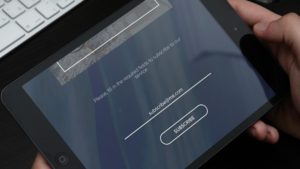By Tommy Kelly, CEO, eShopWorld
After losing their primary route to customers when stores closed during the pandemic, key players in the global fashion industry have nevertheless shown remarkable resilience by accelerating to digital, for ecommerce, livestreams and fashion shows.
Fortunately, these brands have been able to move on a rising tide of younger luxury shoppers, Millennials and Gen Z, who, mobile-first and social-first, are now predicted to make up 61% of the market by 2026. Their performance has been further boosted beyond the traditional channels and markets as older shoppers have migrated to digital channels, becoming more comfortable with purchasing and interacting online.
Many brands have also recognised that focusing primarily on home markets is a huge barrier to growth, particularly as store re-opening and consumer mobility vary dramatically from country to country. The longer-term growth prospects for fashion also vary wildly with predictions that revenues will shrink by 27-30% in 2020 according to McKinsey while the supply chain may take years to recover. Recover it will but it is now generally agreed that more of it will be online and more of it will come from a larger number of countries.
Because of the shift to online, many brands are finding growth in the midst of the crisis; international online sales of luxury fashion increased by 170% year-on-year in August and September, based on our own data. The rise has been going on for a while; these increased sales figures follow a peak of activity in July when cross-border sales of luxury goods were at levels 40% higher than in the lead up to Christmas 2019 – traditionally the strongest sales period in the calendar alongside the January sales.
So, the opportunities are clearly there, but taking advantage of them and achieving growth consistently presents new challenges.
First of all, the intimate, immersive and personal experience for which luxury brands are leaders in-store, risk being lost online, which not only devalues the brand but makes up- and cross-selling hard. Because of this reliance on in-store experience and exclusivity, many luxury brands postponed investment in digital channels, and were less well-prepared for the recent fast pivot to digital that others have used to great effect.
In selling luxury online, the keywords are authenticity and trust. Much of the growth in luxury is being driven by status-seeking purchasing behaviours, and in this respect authenticity is why consumers want to shop directly with the brands themselves – alleviating fears of receiving counterfeit goods. Delivering on that authentic promise across borders relies on brands being able to build trust, which comes in the form of localised and personalised shopping experiences – ones that make online customers in every geography feel as if they are receiving the same level of service and convenience they would enjoy if shopping at their local store.
Proof comes from our data which show luxury brands that embrace the concept of localised commerce – making shopping seamless and easy alongside the traditional tenets of quality, craftsmanship and heritage – are seeing strong growth in sales.
This approach provides an opportunity for a longer-term shift. While stores have re-opened, they still face an uncertain future. Its likely brands will merge the physical and digital worlds playing to the strengths of each channel – stores becoming more experiential and immersive while ecommerce provides the transactional engine for growth – to create innovative retail experiences for consumers that now shop across channels.This is important because research shows that online experiences influence at least 40% of luxury purchases.
In addition to trust, another challenge is making the right decision in terms of building out online channels globally. The easiest option is of course to jump onto a marketplace and let them do all the work. However, this comes at a hefty cost, not least the risk of counterfeits, which are rife on marketplaces. In addition to having to pay a margin of as much as 30%, brands lose control of their data, which is the valuable raw material that will enable them to build the all-important experiences to bond with customers.
The perfect solution is for companies to retain complete control over the brand experience, channels, marketing and data – a non-trivial challenge to deploy successfully across multiple global markets. There are, however, options to outsource many of these elements but still without losing control – from storefront and marketing through to all of the localisation that drives conversion in every territory – currency, duty and tax, compliance with regulations, payments, and logistics for delivery and returns. In such an ecosystem, the brands’ preferences and policies can remain central, not those of a third-party marketplace, thus ensuring that they are delivering the all-important personal and personalised experience to customers.
Further evidence that keeping control is critical, comes from brands that have developed new online sales channels during the pandemic. For instance, after SIHH rebranded as Watches & Wonders and took its show online, the event drew in 800,000 viewers and brands, including Panerai and Cartier, sold online after the Livestream. Meanwhile, Gucci launched Gucci Live, a video service from a new faux luxury store with cameras and TV-style lighting for remote clienteling, an experiment that has now been extended to the entire EMEA region.
These are brands for whom there are no borders but who at the same time, recognise the need to act responsively and sensitively to the needs of different cultures, demographics and tax and regulatory regimes. And they are aggressively pursuing opportunities in new territories such as Mexico and The Philippines, refusing to be distracted by barriers to trade threatened by Brexit.








